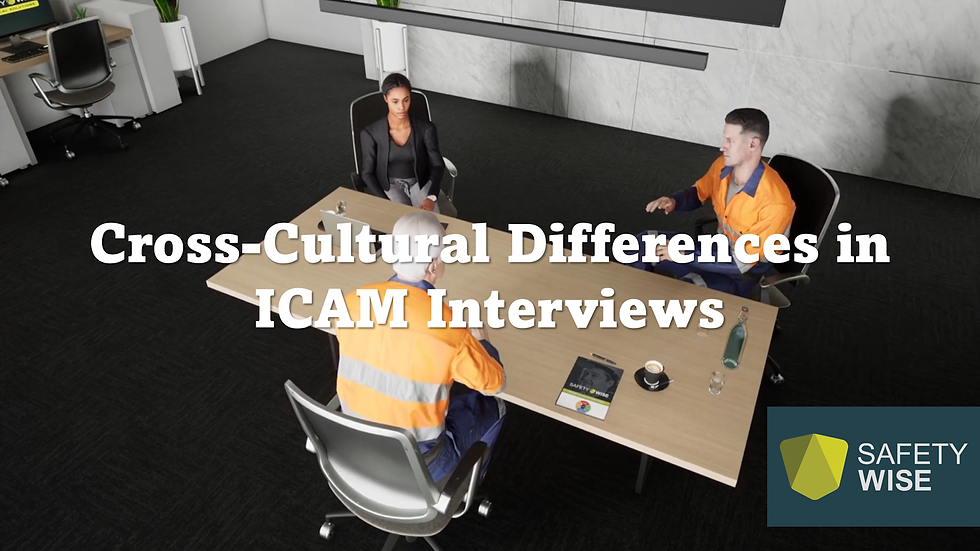Secure the Scene, Preserve the Evidence
- Luke Dam

- Apr 19, 2016
- 4 min read
Updated: Jun 10, 2025

Introduction
Immediately following an incident in the workplace, your first priority is to make the area safe to prevent any escalation of the incident and to then preserve the scene so as a thorough investigation can take place as soon as possible.
In all instances, the site emergency response plan should be initiated to care for anyone injured and to make the scene safe.
This can include:
Evacuating staff as required
Provision of first aid and medical care
Accounting for all personnel
Implementation of immediate corrective actions to prevent further incidents from occurring
Once a handover from the emergency response team has occurred, Investigators should begin the process of securing physical evidence such as damaged equipment, video footage, data logs, reports and other items key to a successful investigation.
Regulator Notifiable Incidents
State regulators require employers to notify them when an incident meets certain criteria under the states WHS Acts and Regulations.
If the incident meets the requirements for a formal notification, you must ensure that the scene is not disturbed until a Workplace Inspector from the relevant state Regulator attends the site.
The only time you can disturb the scene is when:
A regulator gives you permission to
To protect the health and safety of a person
Aiding an injured person involved in the incident
Taking essential action to make the site safe or to prevent a further occurrence of an incident.
Why Do We Secure The Scene?
Following any incident, there are two key things that may “disappear” as such:
Physical evidence
Memory of what occurred
The physical evidence is the easy one - Things like tools, equipment and other items may disappear for a number of reasons including as part of a scene clean up (whether intentional or not), they may have been moved or removed during the emergency response phase or they may have been intentionally removed to hide the chain of events or vital evidence.
The memory of what happened is harder - it’s expected that any incident in a workplace is likely to involve employees who have or could suffer a degree of psychological trauma given their often close relationships with those involved. As time moves on, the memory of what occurred can become distorted through discussions with others including friends, family, other employees or counsellors. For this reason, it is imperative that potential witnesses are interviewed and written statements are taken as early as possible, whilst still being mindful of the likely emotional issues they could be experiencing.

Key Considerations for Securing the Scene
When securing the scene, we need to be mindful of the potential complexities and the size of the area involved. It is always easier to start with a larger area and then reduce it down once you have a better understanding of the incident.
If outdoors, be mindful of not only the weather at the time of the incident but also the weather likely to be experienced in coming days as you investigate. Will rain wash away evidence? Will wind blow away items of interest? Will snow cover evidence? This sort of information may factor in to how you begin to work the scene or secure it- do you need tarps or marquees for example?
If the scene is in a high vehicle traffic area, what are the impacts to the business operations if access is blocked for a period of time? Is there work arounds for this scenario? If there are no alternatives, is there a way to allow traffic to continue off to the side? Be mindful however that tyres can pick up evidence and move it out of the scene or its original location or damage existing evidence such as marks on the road, etc.
Depending on the nature of the incident and its location in the workplace, there may be a requirement to protect pedestrian traffic from the sights of the incident such as in the event of a fatality or serious injury. This may require some form of temporary screens or something as simple as parking vehicles in such a way that they provide a measure of privacy. Regardless of which method is used, the mental wellbeing for other staff must be an important consideration.
Conclusion
Effective scene preservation is vital to the success of any investigation. It’s easy to come into a scene and be overwhelmed by the sensory overload such as sight, sound, smell and others.
Take your time to slow down and take things in. Try not get caught up in the emotion of the moment. Then begin to work through the steps needed to secure the scene and preserve the incident. Remember to utilise available resources including the investigation team, site resources and others as required- you can’t do everything yourself!
Interested in Knowing More?
Further information on Safety Wise’s Incident Cause Analysis (ICAM) Training is available from our website: http://www.safetywise.com/
Additional ICAM Related Services
Safety Wise also offers the following additional services for sites that adopt the ICAM investigation analysis method:
Quality review of incident investigations using ICAM
Trend analysis of organisational factors contributing to serious incidents
Participation in investigations as an external / independent party




Comments